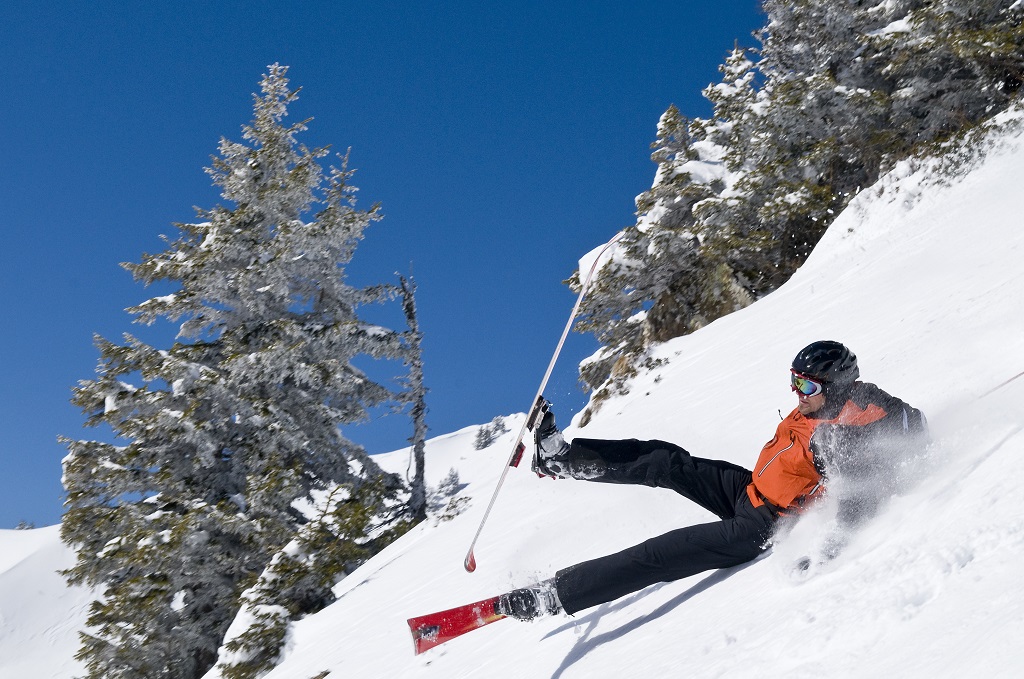Downhill Thrills and Optimism Bias – How to Stay on Your Feet

Surprisingly, the subject of my final article for this decade (hasta la vista 2010s!) presented itself in a ski shop where I recently found myself waiting in line for the boot fitter.
All the customers were primed for the pending season, and a quick glance of the crowd revealed skiers of all skill levels and abilities. As we whiled away the time, a novice skier from a distant city took the fitting seat. After the fitter had measured the skier’s foot and found a boot the right size, the fitter inquired about the gentleman’s skill level. The exchange was… interesting.
Clearly, the man was a beginner skier but rated himself as advanced. (At best, he may have been at the low intermediate level.) Additional dialogue between the fitter and his customer confirmed his status, yet the skier clung to the belief that he was an advanced level skier. Finally, the fitter declared that he would set the customer’s bindings at the Type 2 level. (Type 2 is the intermediate skier setting range.) The customer initially looked puzzled at that response as he clearly didn’t understand the classification system but then smiled and said, “OK. Sounds good.”
The Dangers of Overestimating Our Abilities
Exaggerations about individual ability levels happen every day in every setting. Sometimes these exaggerations serve a higher purpose. For example, someone might be psyching themselves up to do something new that stretches their abilities. This is fantastic and spurs growth and development for a strong finish. However, when the delta between expected results and actual performance proves too wide to surmount, we see spectacular crashes and flameouts. This is not so fantastic.
Humans are hardwired with a whole host of biases that masquerade and manifest as beliefs—and the skier in my story displayed a classic case of optimism bias. Optimism bias generally causes us to overestimate positive outcomes and underestimate the likelihood of negative events. In my story, the skier’s over belief in his ability level was harmless within the confines of the shop. If translated into the settings that secured his boots to his skis, however, it could result in injury to him or those around him.
Optimism bias manifests itself constantly—especially in complex projects, which is why humans consistently underestimate the time it takes to complete them. This example of optimism bias is best summed up by Hofstadter’s law. It cheekily states that “It always takes longer than you expect, even when you take into account Hofstadter’s Law.”
So, what can you do to begin to change your personal optimism bias? Let’s take a moment to explore three actions that you can take.
Three Tips for Overcoming Optimism Bias
- Get Coached. Find yourself a good coach or mentor to help you identify optimism bias as it presents itself and work with you to modify the way you think. One of the most important roles that I fulfill as a coach is to help change what others believe through Socratic questioning and appreciative inquiry. Find someone who can do that for you.
- Go for Breadth vs. Depth. Seek out learning opportunities that expand your knowledge base outward. Put another way, learn a little more about many different subjects instead of a lot more about one specific subject. Subject matter expertise is critical, but a broader base of foundational knowledge will serve you equally well in different ways.
- Seek Diverse Opinions. If you’re making big decisions, don’t make them alone. Moreover, do not rely upon the people who work with/for/around you to provide objective advice. Figure out where and how to find others who can provide you with unbiased perspectives when you have to make a big call.
Optimism bias is a pervasive part of the human condition that has been well documented in behavioral economics and psychology. Like many of our hardwired biases, you will never escape its clutches entirely. If you’re deliberate in your attempts to blunt it, though, you should be able to avoid some of the more dangerous traps that lie ahead of you.
Here’s to a Happy, Healthy, and Crash-Free 2020
So, as we enter the 2020s, make sure that your ski settings match your ability level and enjoy the rush of wind in your face as you head downhill. It may be my biases speaking, but I see better decisions ahead as we enter a new decade.
